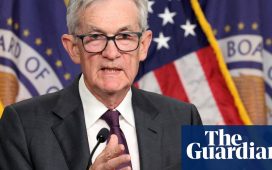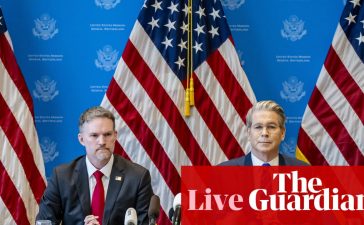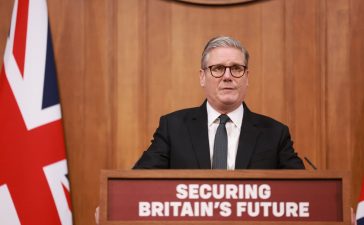
The man who is likely to become the next UAW president is wasting no time preparing for a high-profile change of leadership at the influential labor union, according to a highly detailed draft transition document obtained by the USA TODAY Network.
Shawn Fain currently holds a small but arguably safe lead in a runoff election to unseat UAW President Ray Curry though there is ongoing controversy over how votes have been counted and alleged ballot irregularities.
The challenger plans to show UAW members, staff and automakers they need to get used to a new leader with a different style and little patience for delay in making change, according to the draft.
The report, written for Fain by his transition team manager Chris Brooks, outlines a plan to “shake up” the union with some 400,000 members. The document says the Fain team must “ID who needs to be purged” and they will “come down on” those who do not conform.
What the transition plan says
“This is a working document outlining initial thoughts, recommendations, and questions regarding Shawn Fain’s transition to president,” the draft transition plan begins.
The eight-page document identifies three key phases: The Election Phase (now), The “Shakeup” (swearing-in) and the “Big 3 Contract Campaign and Strike.”
The draft plan, as written in February, included these highlights:
- “There is a new sheriff in town, something different is happening. This starts with who is appointed to what, who does and does not get fired, and by demonstrating the willingness of the new leadership to embrace new ideas and new practices.”
- “The mantra of the counter-revolution is going to be ‘we’ve never done it this way.’ Our response must be clear, consistent, and unrelenting: ‘We know. Now do it anyway.’ “
- “If we do this well, then heads are going to be spinning with how fast thing are going to change. … Some people will leave and we should make that as easy as possible for them.”
- “Complete rebranding of the union … informed by a more militant/fighting vision.”
- “Quickly have a public meeting with IBT (International Brotherhood of Teamsters) President Sean O’Brien and publicly commit to support one anther in coming struggles. … IBT is critical in Big 3 strike, secure commitment of car haulers to not cross picket lines.”
- “Bernie (Sanders) has been organizing large scale rallies with Sean O’Brien and Sara Nelson (President of the Association of Flight Attendants) in big cities to build support for the upcoming UPS strike. Bernie’s people are interested in working with us to organize similar events in locations with big auto plants.”
- “Reformers are reviving the original vision of the UAW as a force for racial justice and rank-and-file power, we still have the power to shut down our industry … we are going to put an end to concessions and tiers, protect jobs, organize the South and make the Green New Deal a reality by unionizing the next generation of EV.”
- “This will build good will and excitement among potential allies in the lead up to striking the Big 3.”
- “ID those we can work with, move the program, ID those who need to be purged.”
- “If staff stay, then they are staying on our terms.”
- “We should … give them the choice to stay or go (and we should make going as easy as possible).”
- “We don’t care what people did before we took over. What we care about is that people understand what our goals are and what our expectations are.”
- “It would be wise to consider offering across-the-board buy-outs or enhanced severance of some kind.”
What does Fain say about buyouts now?
The USA TODAY Network was unable to get direct answers to these questions submitted to the transition team:
- When would Fain plan to offer buyouts for current UAW staff, locals or international?
- Is Fain concerned about whether a hard-line shake-up immediately could divide the union heading into contract talks this year with Detroit Three automakers?
- How can Fain see the margin of potential victory as a mandate if it’s a relatively close result?
- What do you say to union members who voted for Fain because this sort of approach — with us or you’re out — is what Fain supporters thought he was against?
Fain responded last week via email, “We’re excited to announce our plans for a new direction in the union, and once we take office, we’ll be ready to get to work immediately. We were elected to lead this union in a new direction, and that’s what we intend to do. As we’ve said many times before, the status quo isn’t working for the membership. That means we need to take a new approach to the companies, and a new approach to how our union operates. I’m excited to work with the many talented and experienced UAW staff members who are ready to join me in that mission.”
Fain declined to discuss buyouts. In response to staffing, he wrote, “We’re excited about the team that’s been preparing for the Fain administration. Veteran UAW members and staffers, and other experienced organizers from across the labor movement, have been a core part of our planning process as we get ready to take office.”
More:Candidate for UAW president got $30,000 donation from mine safety engineer
Fain declined to comment on the likelihood of a potential strike, referring instead to a March 17 interview from “In These Times” that quoted Fain saying, “I don’t really want to divulge strategies or tactics, but I’m confident the membership is going to see very different tactics and a very different style of bargaining than what they’ve seen in the past.”
All of this is unfolding as contract talks are set to begin later this year with Ford, General Motors and Stellantis. Four years ago, 48,000 workers at GM’s 55 facilities in 10 states went on strike for 40 days before ratifying a four-year contract.
Who is guiding the Fain transition?
Fain’s transition team provided to the USA TODAY Network a biography for Brooks, the transition director who crafted the draft plan.
“Chris Brooks is the field director at the NewsGuild of New York where he oversees the union’s contract campaigns and strikes, bargaining strategies, member representation and education programs. Prior to working at the Guild, he worked as a staff writer and organizer for Labor Notes, where he provided organizing training and strategic consultation to thousands of workers across the United States and Canada,” the email said. “Prior to that, (Brooks) was a labor and community organizer in Tennessee, training rank-and-file activists, bargaining new contracts, and building community power. As a labor journalist and educator, Chris has bylines in numerous national magazines, news publications, and academic journals. He received his Masters in Labor Studies from the University of Massachusetts at Amherst.”
Brooks didn’t immediately respond to a message left last week.
Transition leadership shake-up spotlights issue of race, diversity
Last weekend, the transition team fielded questions about a news report headlined “UAW Challenger Fain Purges Top Allies in Favor of Brooklyn Consultants” posted March 19 in the Payday Report, a labor news agency that’s funded by public donations.
More:UAW President Ray Curry gives a glimpse into strategy, what’s ahead if elected
More:UAW presidential candidate says rank-and-file members believe leadership abandoned them
The report centered on a shake-up in the Fain transition team, and highlighted an internal letter dated Feb. 22. The USA TODAY Network obtained the five-page letter from a source close to the campaign who declined to be identified for fear of reprisal. It is the same letter cited by the Payday Report, and acknowledged to the USA TODAY Network by the Fain transition team.
The letter written by Joe Rioux, who said he had agreed to become chief of staff under Fain, expressed concern about Brooks as someone who lacked experience or “personal maturity” to handle the job, while also showing little interest in transparency or collaboration.
“I did not know that incoming senior staff leadership was also being let go or resigning,” Rioux wrote, referring to himself and four people who had been let go and a sixth person who resigned in solidarity with them. Rioux pointed out he was surprised to learn Fain was going in a “different direction.”
Rioux attached to his letter a four-page note from Jonathan Smucker, whom Rioux identified as one of the team members Fain let go. Smucker in his note expressed concern about the potential for disruption and the role of Brooks.
Smucker wrote that the new regime may not understand the importance of having all groups represented in leadership, specifically Black members.
“This has to be a high priority in our hiring and planning. It’s the right thing to do. It’s also a non-negotiable strategic necessity,” Smucker wrote.
Efforts by the USA TODAY Network to reach Rioux on March 20 were unsuccessful. Smucker didn’t immediately reply to a request for comment on his letter.
The Detroit-based UAW, which stands for United Automobile, Aerospace and Agricultural Implement Workers of America, represents a diverse group of workers in terms of race, religion, military background, sexual orientation and other areas.
Current UAW President Ray Curry, a U.S. Army veteran and former truck assembler at Freightliner Trucks in North Carolina, went on to earn a degree in finance and would be the first Black man elected to lead the UAW if he should pull out an unlikely victory in the runoff. Curry succeeded Rory Gamble, a Black union leader appointed to restore confidence in the union after a corruption scandal. Results in the election could be announced in coming days.
Fain, who is white, began as an electrician at Chrysler’s Kokomo, Indiana, casting plant in 1994, is currently an administrative assistant to the UAW vice president over the union’s Stellantis Department.
This UAW election was run from the start with oversight by a federal monitor as a byproduct of past corruption that led to the conviction of UAW presidents Dennis Williams and Gary Jones. An estimated 1 million ballots were sent out to active and retired members.
Concern about unity
Harley Shaiken, a University of California-Berkeley emeritus professor who specializes in labor and the global economy, said running the UAW effectively requires careful balance and sensitivity, along with passion.
“Shawn Fain was able to ride a desire for change to (what could be) an unprecedented, though narrow, victory. “
If Fain ultimately wins, “he will now be the person defining a new direction for the union and it will be a test of his leadership as to how he manages this transition,” Shaiken said, noting that the turnout was about 13% of total eligible UAW voters.
He questioned the wisdom of taking Sanders into auto plants right now. “Bernie Sanders has been a strong friend of labor but you do have a sizable number of UAW members who lean in different directions, some of whom voted for (Donald) Trump. That’s something you might want to introduce later on, but not in a divided union on the verge of national bargaining.”
Fain wants and needs to move boldly but uniting the membership and understanding history is essential, Shaiken said. For example, the UAW has a two-tier wage system not simply because of weak negotiating but in part because it was mandated by the federal government prior to bailouts during the Great Recession.
“It is now a closely divided union,” Shaiken said. “What the opposition did truly resonated and is unprecedented since 1946, when Walter Reuther was also narrowly elected president. He won by a margin of about 125 delegate votes out of 9,000 cast. It leaves a critical goal going forward not simply realizing change but uniting the union behind it. These are going to be tough negotiations coming up.”
Contact Phoebe Wall Howard: 313-618-1034 or phoward@freepress.com. Follow her on Twitter @phoebesaid








